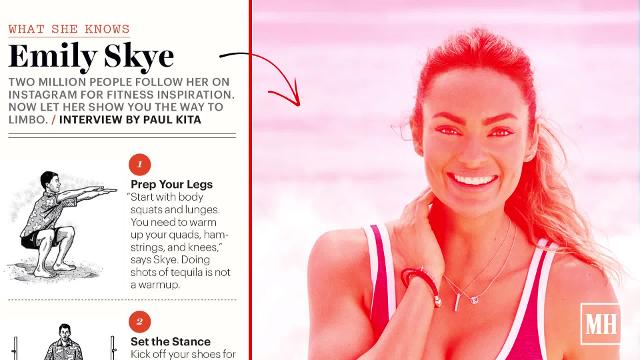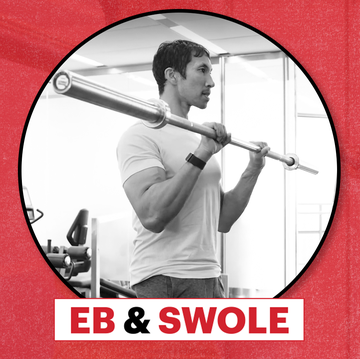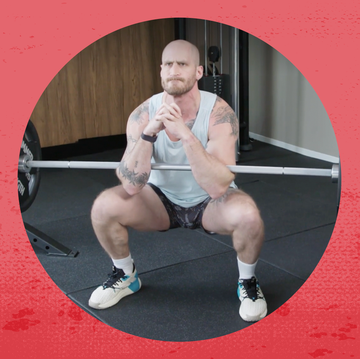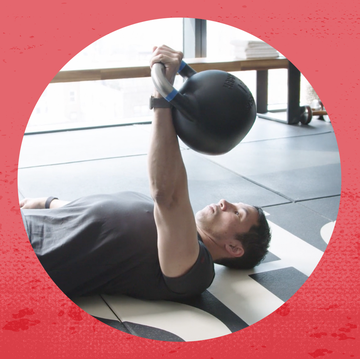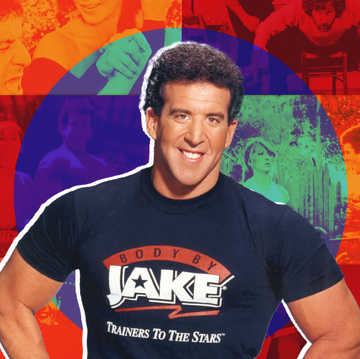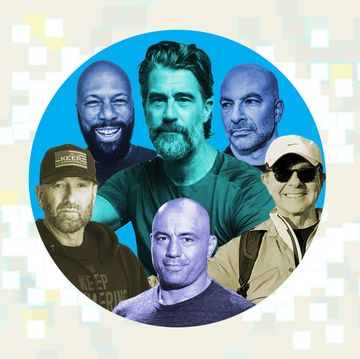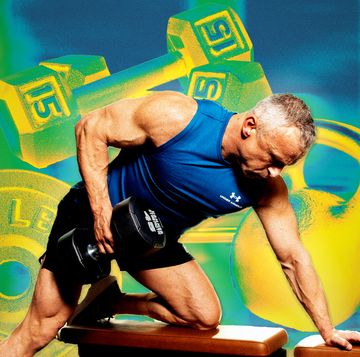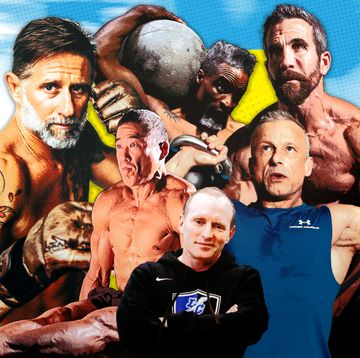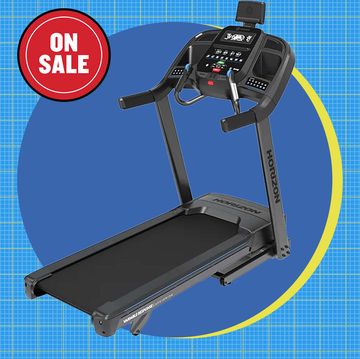A popular magazine asked me to write an article on weight training for the over-40 average Joe. (It wasn’t Men’s Health, by the way.)
While I was flattered, the warm and fuzzy feeling faded once I skimmed articles on the topic in their archives.
Suddenly, I felt embarrassed more than anything—like I was a washed-up ballplayer being asked to pitch Viagra or be a spokesman for a new line of “rich mahogany scented” adult diapers. The articles were so lame.
So I decided to write my own type of over-40 training article. If you’re a healthy man who’s trying to train hard past 40, this is for you.
The Big Lifts
Just because you’re older doesn’t mean the “big” exercises like squats, deadlifts, and bench presses are suddenly too dangerous to include. Performed correctly, these movements still offer the biggest bang for your training buck.
However, the “performed correctly” part becomes much more important with age.
Related: 10 Secrets to the Perfect Deadlift
So if you want to regularly include the big lifts you should do the following:
- Practice near perfect technique—and never stop learning it. Think: “I know I can do that lift a bit better,” and you’ll continue to lift well into old age.
- Perform more warmup sets.
- Never, ever train through pain.
- Hit your “required reps” and that’s it. Max-rep or PR sets with a big lift can be flirting with disaster.
- Never do a big lift first.
- Rotate variations of the big lift regularly. This is to prevent overuse injuries and ensure more balanced development.
For instance, I haven’t done a standard deadlift in almost a year. But I have done other deadlift versions, such as snatch grip, stiff-leg, trap bar, dumbbell and barbell Romanians, standing good mornings, seated good mornings, sumo off pins, snatch grip off a podium, and a multitude of back extension variations (for 100 intense new workouts, try Maximus Body).
Related: Normal-Sized Guys Who Are Freakishly Strong Tell You How They Did It
Isolation Exercises
For some nonsensical reason, older trainees are always pressured to dump any isolation or “single-joint” exercises to “save energy.”
Like a few sets of dumbbell curls or triceps pressdowns, not those excruciatingly slow 1RM deadlifts, will be what sends them tumbling down the overtraining rabbit hole.
In fact, older lifters should do more isolation work—not less—especially if trying to bring up an aesthetically weak body part. These exercises allow for greater mind-muscle connection and can help clean up your technique, which is often the limiting factor.
And since isolation lifts aren’t as taxing as the “bigger” lifts, sets can safely go right to failure (and even beyond), which is a powerful hypertrophy tool.
Of course, training economy still matters. If you only have 30 minutes to work out, prioritize a big lift—not 11 variations of cable curls.
Related: 5 Guys Who Wake Up at 4 a.m. to Work Out Tell You How They Do It
Variety
Exercise variety is a grossly undervalued hypertrophy tool. Basically, the bigger your exercise toolbox, the better your results.
As exercise scientist Brad Schoenfeld notes in a study published in the Journal of Strength and Conditioning, your muscles’ architecture supports variety during resistance training. If you want them to grow, you must work them in different planes of motion and at different angles
Furthermore, if you’re older and more beat up, something as subtle as a change in grip width or hand position can be enough to mitigate pattern overload injuries.
Or you can just be stubborn and keep loading your beloved lying triceps extensions for another 25 years. By the way, that’s not your dog barking, it’s your elbows.
Related: 38 Dumbbell Exercises You’ve Probably Never Seen
Overtraining
Every “three days a week” gym hero works out with one eye on the clock, rushing to beat the “59-minute deadline” for fear that he’ll wake up in a hospital bed with the testosterone level of an earthworm.
While few recreational lifters will ever come close to overtraining (“overreaching” is more plausible), the fact remains that older dudes get bogged down faster.
So here’s a checklist of what to do.
Do shorter workouts more frequently. Forty (hard) minutes, six days a week is more tolerable than 80 (hard) minutes three days a week.
A good rule of thumb: A few hours after you complete a workout, you feel as if you could repeat it.
- Avoid grinding reps, especially with heavy barbell work. Those recovery checks you’re writing keep getting bigger while your bank account is only getting smaller.
- Use variations of the patient lifter’s method. That is 8 sets of 3 crisp reps with your 5RM.
- Manage volume correctly. Volume is great for building muscle, but it can gas you too. Instead, push volume in waves. You could do a month of moderate volume, a second month of much higher volume, and a third month at a lower volume.
- On that same note, always bookend very intense or high volume phases with a deloading phase. (Must be longer than one week.)
- Skip the barbells every now and then. Between serious volume or intensity “blocks,” skip the heavy barbell work for dumbbells or single-leg variations. Also add in steady-state cardio and mobility drills. It’ll be like adding oil to your lamp.
Steady state cardio is an awesome recovery tool (as long as it isn’t a slog fest). It burns fat, improves mood and mental clarity, and boosts cardiovascular health—things all older guys need.
And here’s How Long, Slow Runs Help You Build Muscle.
Lifestyle
Stress is like the Terminator. It can’t be bargained with, it can't be reasoned with. Push it too long and it will take you out.
So it’s no surprise that smart coaches like my colleague Luke Leaman now start their coaching process with stress management. As he says, stress can cause insulin resistance, reduced energy production, and a reduction in male sex hormones.
Related: Secrets to Building Muscle After 40
I’m not going to tell you to hand write thank-you notes to your high school math teacher while slow-roasting your own coffee beans for your morning cup of gratitude. That’s something your 25-year-old life coach will tell you to do.
Here’s some practical stuff that works even while you’re still hustling.
- Get more sleep. You know this, though. You’re surviving on five hours, not thriving. Here are 5 Ways to Sleep Better Every Night.
Belly breathing. Most people take very short, shallow “half-breaths.” Get them to perform a few deep, full lung-filling breaths (in through the nose, out through the mouth) and watch their reaction.
Three minutes, three times a day works wonders to get the parasympathetic nervous system back online.
Slow down. How? Just do less.
Yeah, right.
A better answer: when overwhelm hits, do the deep breathing above and go for a 15-minute walk. Running through your mental to-do list won’t help. You need to re-set your brain.
Talk to someone. If there’s one thing that I won’t change about my coaching process, no matter how often other coaches tell me I’m crazy from a time monetization perspective, it’s that I won’t stop spending time talking to my clients on the phone or Skype.
Email is a cold, impersonal tool that's become a mechanism for delivering bad news or more shit to do. It also offers little insight into the emotional state of the person writing.
I can send clients charts and forms and have them email me how they feel on a sliding scale of “shit” to “marvelous,” but I hear more and learn more talking to them than in all that bullshit paperwork combined. Find a coach or a workout partner who is willing to do the same.
On to the Next Chapter
Don’t get me wrong: The only way to make fitness work for someone is if you “meet them where they are.” And for many men, it’s a place where just getting up and moving or eating less crap—try the 28-day MetaShred Diet— will be an enormous win.
Still, some attention needs to be paid to the “already initiated” who have been going strong, but are starting to feel the heavy hands of Father Time.
Related: The 8-Week Video Workout Series Developed Specifically for Men Over 40
You don’t have to change everything you’re doing. Just work smart.
You know, just like what your favorite 25-year-old life coach has been saying to do since, like, forever.
Related Video:
Bryan Krahn, C.S.C.S., is a personal trainer, fitness writer, and online coach. He specializes in helping real guys look like they lift really heavy weights. The post Over-40 Training Is a Scam originally ran on his blog BryanKrahn.com.

